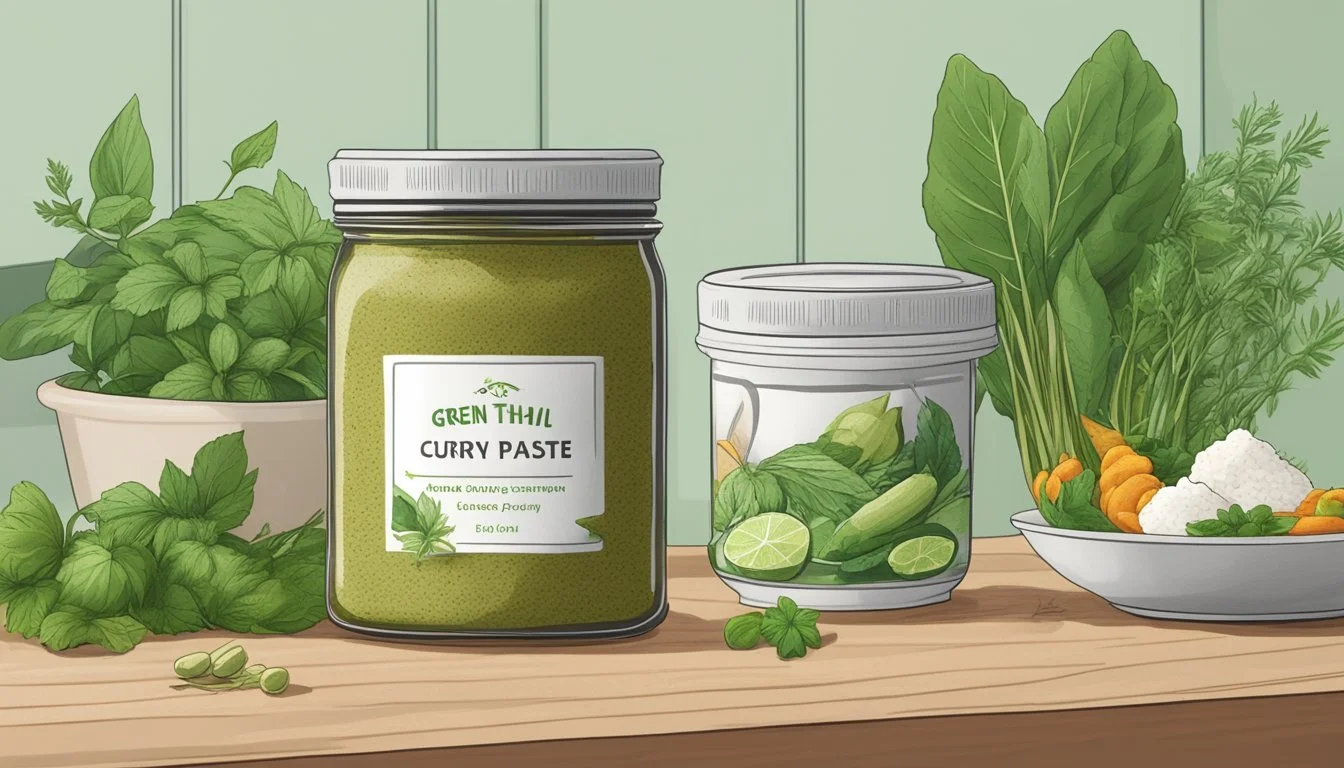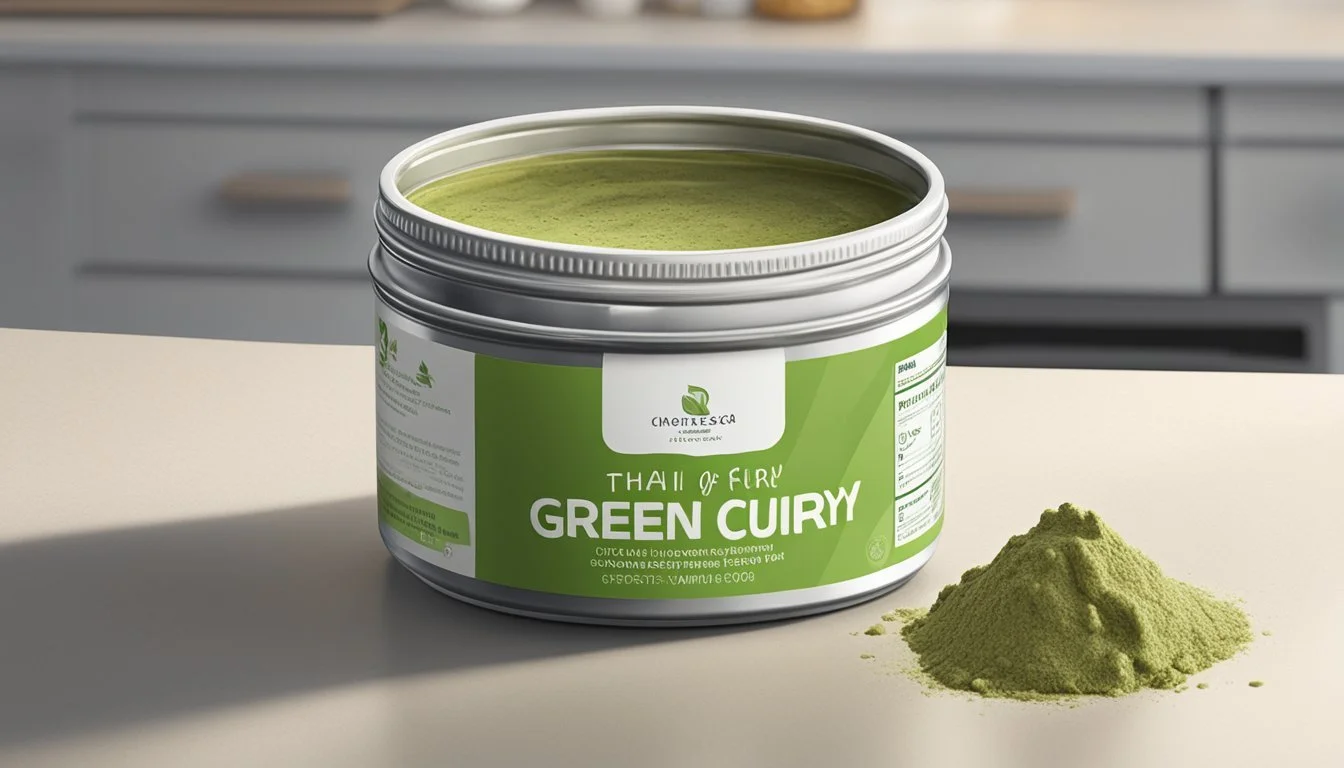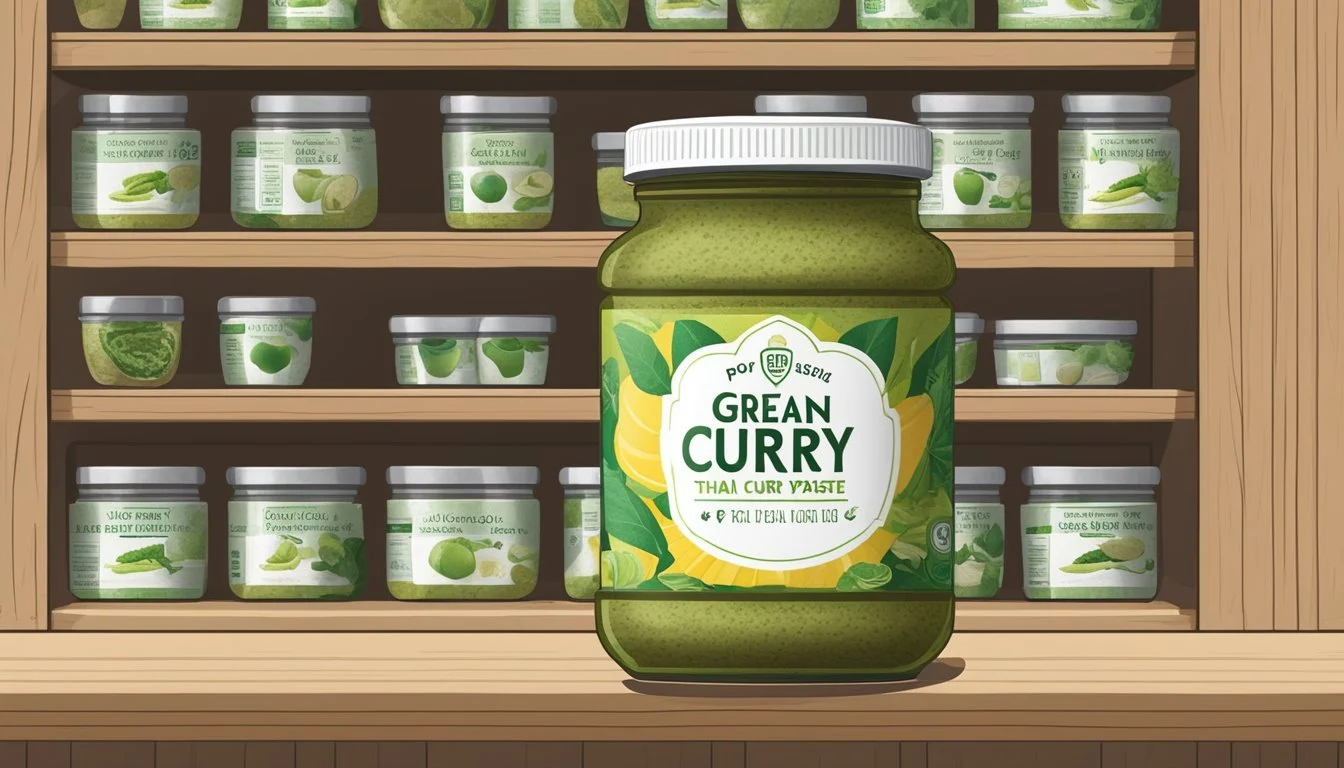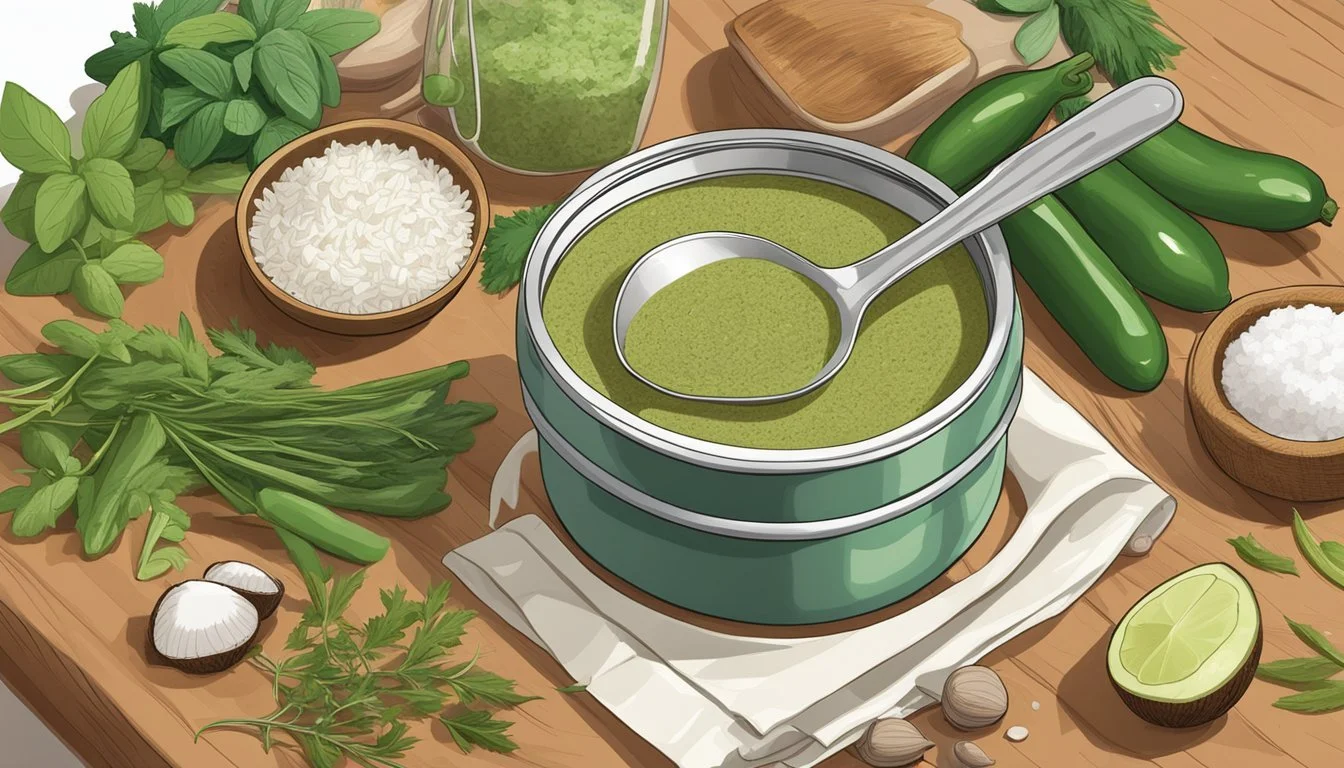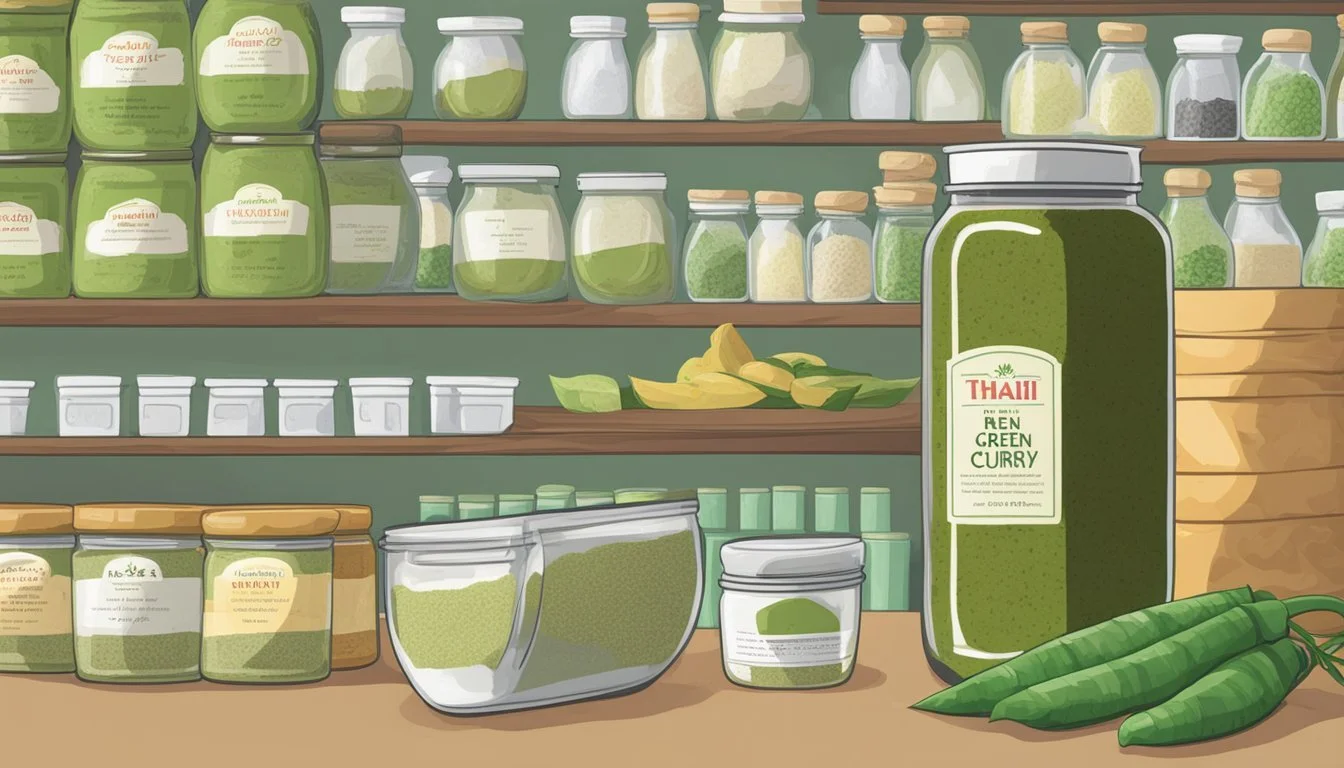Does Green Thai Curry Paste Expire?
Understanding Shelf Life and Storage
Green Thai curry paste, a staple in many kitchens, adds exquisite flavor and heat to a variety of dishes. Yes, Green Thai curry paste does expire, and its shelf life depends significantly on whether it's opened or unopened. When unopened, it can last for three or more years if stored in a cool, dry place.
Once opened, the paste should ideally be used within a few weeks to maintain its freshness and optimal taste. Proper refrigeration is crucial to extend the shelf life up to a few months, but users might notice a gradual decline in flavor quality afterward. It's essential to check the paste regularly for any signs of spoilage, such as changes in aroma, texture, or color.
For those who love the distinct taste of Green Thai curry, understanding its expiration timeline ensures that each meal is both delicious and safe. This knowledge empowers home cooks to make the most of their ingredients, keeping dishes vibrant and true to their intended flavors.
Understanding Curry Pastes
Curry pastes are essential ingredients in many Thai dishes. They come in various types, each with unique flavors and ingredients. Preservatives play a role in extending the shelf life of these pastes.
Varieties of Curry Pastes
Curry pastes are generally categorized by their color and specific ingredients. Green Thai curry paste is known for its vibrant color, derived from green chilies and herbs, and has a relatively milder heat level. Red curry paste gets its color and spiciness from dried red chilies and is often more robust. Yellow curry paste, which includes turmeric, provides a milder, earthy flavor and less heat. Each type offers a distinct taste profile that is integral to various Thai dishes.
Key Ingredients in Thai Curry Pastes
Thai curry pastes are made with a blend of aromatic ingredients. Green curry paste typically includes green chilies, lemongrass, garlic, ginger, galangal, and shallots. These ingredients create a fresh, herbal flavor. Red curry paste contains dried red chilies, garlic, ginger, lemongrass, shrimp paste, and sometimes turmeric. Yellow curry paste often includes turmeric, ginger, garlic, lemon grass, and shallots. The combination of these spices and herbs forms the vibrant and complex flavors characteristic of Thai cuisine.
The Role of Preservatives in Curry Pastes
Preservatives are used in curry pastes to extend their shelf life without compromising flavor. Common preservatives include salt, which acts as a natural preservative, and vinegar or citric acid, which help maintain acidity levels. These ingredients inhibit the growth of bacteria and mold. Additionally, airtight containers and proper refrigeration are crucial in preserving the paste after opening. Preservatives ensure that the intricate balance of spices and herbs in curry pastes remains intact over time, allowing for consistent culinary results.
Storage Solutions for Curry Pastes
Proper storage of curry pastes extends their shelf life and preserves their flavor. Key considerations include maintaining an airtight seal and controlling temperature and humidity.
Proper Storage Techniques
Glass jars with an airtight seal are ideal for storing curry paste. They protect the paste from moisture and air, which can cause spoilage.
Unopened jars of curry paste can be kept in a cool, dark place like a pantry. Once opened, the paste should be transferred to a glass jar with an airtight seal to prevent exposure to air and moisture. Oil on the surface of the paste acts as a barrier against air, and it’s important to retain this layer.
Stir the curry paste well before each use and ensure the jar is tightly sealed afterward. Proper handling minimizes the risk of mold growth.
Refrigeration vs. Pantry
Refrigeration is preferred once the jar of curry paste has been opened. Temperature control in a refrigerator helps slow down the deterioration process. Stored at a consistent temperature, an opened jar of curry paste generally lasts about 2 to 4 weeks in the refrigerator.
In contrast, pantry storage is suitable for unopened jars. These should be placed in a cool, dry place away from direct sunlight and heat, both of which can degrade the paste's quality. The pantry is not recommended for opened jars as it cannot provide the same level of temperature stability and humidity control as a refrigerator.
Shelf Life and Expiration Details
Green Thai curry paste can last for extended periods, particularly if stored properly. Factors such as whether the paste is opened or unopened and the conditions of storage significantly influence its shelf life and quality.
Deciphering Expiration Dates
Unopened green Thai curry paste generally has a long shelf life, often lasting three years or more when kept in a cool, dry place. Each container is typically stamped with a best before date, which indicates the time frame for optimal quality.
Once opened, the curry paste should be kept in an airtight container in the refrigerator. In this state, it usually retains its quality for up to three months. Critical signs of spoilage include visible mold or significant changes in color and texture.
Freshness and Quality Over Time
The freshness of green Thai curry paste degrades over time, especially after the container is opened. Initially, the paste maintains a robust flavor profile and vibrant color. Over weeks, refrigeration slows down, but does not entirely stop the degradation process.
Past its prime, the paste might lose potency, altering both taste and aroma. Regular checks for any off-smell or unusual appearance are essential for ensuring it remains safe to use. Proper sealing and storage in cold environments help extend its usable life.
Effects of Expiry on Flavor and Aroma
Expired green Thai curry paste may still be safe but tends to lose its characteristic flavor and aroma. The paste’s essential oils and spices degrade, causing a noticeable decline in its overall taste.
Flavor profiles become muted, and the paste may develop a slightly sour or off-putting smell. While it might not pose a health risk if no spoilage is visible, the culinary quality will suffer. For the best gastronomic experience, fresh or recently opened paste is recommended.
Identifying Spoilage in Curry Pastes
Assessing whether green Thai curry paste has spoiled involves examining its visual and textural qualities, as well as its smell. Spotting changes early can help avoid any potential health risks and ensure the best flavor and quality in your dishes.
Visual and Textural Signs
Color Changes: Fresh green Thai curry paste typically has a bright, vibrant color. If the paste becomes dull or changes color significantly, it may indicate spoilage.
Mold Growth: Look for mold, which can appear as white, green, or black spots on the surface. Mold is a clear indicator that the paste is no longer safe to consume.
Texture: Fresh paste should have a smooth, consistent texture. If it becomes dry, separated, or unusually thick or thin, these changes could signal spoilage.
Rust: Ensure that the container, especially its lid, is free from any rust. Rust can contaminate the paste, making it unsafe to eat.
The Smell Test
Unpleasant Odors: Smell the paste carefully. Fresh green Thai curry paste has a fragrant, spicy aroma. Any sour, musty, or off-putting smell suggests that the paste has spoiled.
Fermentation: Sometimes, spoiled curry paste might emit a fermented odor due to bacterial growth. This can happen even if there are no visible signs.
Storage Conditions Impact: Improper storage, such as exposure to heat or moisture, can accelerate spoilage and affect the paste's smell. Always store the paste in an airtight container in the refrigerator to maintain its quality.
Detecting spoilage early helps ensure that your green Thai curry paste stays both safe and delicious.
Health and Safety Considerations
Expired green Thai curry paste can pose certain health risks if not handled properly, but taking appropriate precautions can mitigate these risks.
Risks of Consuming Expired Curry Paste
Using expired curry paste can lead to bacterial growth, which might result in food poisoning. The paste usually contains various ingredients like garlic, shrimp paste, and chili, all of which can spoil.
When curry paste goes bad, it may develop off smells, mold, or an unpleasant taste. Though some people might not immediately notice these changes, consuming spoiled paste can lead to gastrointestinal issues. Symptoms might include nausea, vomiting, and diarrhea.
Another risk involves the degradation of flavors, which could make the paste unappetizing and less effective in dishes.
Preventing Food Poisoning
To avoid food poisoning, always store green Thai curry paste in an airtight container. Once opened, the paste should be refrigerated and preferably used within 3-4 weeks. Checking for any signs of spoilage before each use is crucial.
Keep the paste at a consistent temperature. Avoid leaving it out at room temperature for extended periods. Use clean utensils to prevent cross-contamination, as introducing new bacteria can accelerate spoilage.
Storage Tips
Store in an airtight container
Refrigerate immediately after opening
Use within 3-4 weeks for best quality
Check for off smells or mold before use
Maintain a consistent refrigerator temperature
By adhering to these guidelines, the risk of consuming spoiled green Thai curry paste can be minimized, ensuring a safer and more enjoyable culinary experience.
Maximizing Curry Paste Longevity
To increase the shelf life of green Thai curry paste, proper storage techniques are essential. Effective freezing and maintaining an airtight environment ensure that the paste remains fresh and flavorful for an extended period.
Effective Freezing Methods
Freezing curry paste significantly extends its lifespan. For best results, portion the paste into manageable sizes using ice cube trays or freezer-safe bags. This prevents the need to thaw the entire batch when only a small amount is needed.
Steps to freeze curry paste:
Place the paste into ice cube trays or portion into freezer-safe bags.
Label each container with the date for easy tracking.
Store in a freezer at 0°F (-18°C) or lower to prevent freezer burn.
Properly frozen curry paste can maintain its quality for up to six months. However, it's crucial to keep it in an airtight container to prevent exposure to air, which can lead to degradation of flavor and texture.
Maintaining an Airtight Environment
An airtight environment is crucial for keeping green Thai curry paste fresh. Once opened, store the paste in a clean, airtight jar and refrigerate it immediately. Exposure to air can cause the paste to degrade quickly, losing its complex flavors.
Tips for maintaining an airtight environment:
Use jars with tight-fitting lids.
Ensure the rim of the jar is clean before sealing.
Store away from heat and direct sunlight.
Refrigerated curry paste, when kept in an airtight container, typically remains fresh for up to 3-4 weeks. Regularly check for any changes in smell or texture, as these can indicate spoilage. Proper storage not only extends the longevity but also preserves the authentic taste of green Thai curry paste.
Usage and Culinary Applications
Thai green curry paste is incredibly versatile in the kitchen, offering rich and complex flavors to a variety of dishes. This section explores its uses in cooking and techniques for enhancing its flavor.
Cooking with Thai Green Curry Paste
Thai green curry paste is a foundational element in Thai cuisine. It combines aromatic spices like coriander seeds, and herbs to create a vibrant flavor profile. When making Thai green curry, the paste is typically sautéed to release its aromas before adding ingredients such as coconut milk, vegetables, and proteins.
Aside from traditional curries, this paste can be used in soups to impart a spicy and aromatic flavor. Additionally, it serves as an excellent marinade for chicken, fish, or tofu. Mixing it with yogurt or lime juice can create a flavor-packed rub for meats.
Flavor Enhancement Techniques
Enhancing the flavor of Thai green curry paste involves a few thoughtful steps. Sautéing the paste in oil before adding other ingredients helps to unlock its deep flavors. This step should not be skipped, as it intensifies the aromatic qualities of the spices and herbs.
To enrich the taste, adding a splash of fish sauce or soy sauce can provide additional umami. Lime juice or zest can bring a fresh zing to the dish. For those interested in experimenting, incorporating a touch of palm sugar can balance the heat and spice with a hint of sweetness.
By understanding and applying these techniques, one can master the art of cooking with Thai green curry paste, ensuring each dish is flavorful and well-rounded.
Differentiating Curry Pastes
Thai curry pastes come in various colors and flavors, each offering a unique taste profile based on the ingredients used. Green, red, and yellow curry pastes are the most common and are distinguished by their ingredients and culinary applications.
Green vs. Red vs. Yellow Curry Paste
Green Curry Paste
Green curry paste is known for its vibrant color and fresh, herbal flavor. It typically contains green chilies, garlic, lemongrass, kaffir lime leaves, and a variety of fresh herbs like basil and cilantro. It is often used in dishes that highlight its sharp and fresh taste.
Red Curry Paste
Red curry paste is characterized by its rich, deep red color, which comes from red chilies. It usually includes garlic, shallots, galangal, and spices such as cumin and coriander. The flavor is bold and earthy, making it suitable for robust dishes and stronger meats like beef.
Yellow Curry Paste
Yellow curry paste gets its color from turmeric and often contains yellow mustard seeds along with other spices like cumin and coriander. It has a milder taste compared to green and red pastes. The flavor is somewhat sweet and aromatic, making it ideal for dishes with chicken or vegetables.
Culinary Adaptations and Substitutes
Green Thai curry paste may sometimes need to be altered or substituted based on availability or personal preference. The following subsections will explore how to adjust the ingredients for diverse flavor profiles and alternatives.
Alternative Ingredients for Flavor Variations
Coconut Milk: For those looking to replace traditional coconut milk in Thai curries, yogurt serves as a lighter substitute, adding creaminess without overwhelming coconut flavor.
Indian Curry Pastes: To bring a different twist, coriander, cumin, and turmeric from Indian curry pastes can be used. These spices offer a unique complexity but will change the flavor profile significantly.
Fresh Herbs and Spices: If green Thai curry paste is not available, fresh cilantro (coriander) and lemongrass can mimic traditional flavors. Chili peppers and ginger can also be added for heat and depth.
By incorporating these substitutes and adaptations, you can maintain the essence of Thai cuisine while introducing new and exciting flavors.
Understanding the Impact of Environment
Green Thai curry paste can degrade in quality and safety if not stored correctly. Key environmental factors such as temperature and humidity play a crucial role in this process.
Temperature and Humidity Effects
Temperature significantly influences the quality of green Thai curry paste. Ideally, it should be stored at or below room temperature. Refrigeration is recommended once the jar is opened. Keeping it cool minimizes bacterial growth and helps preserve flavors for up to 3 to 4 weeks. Temperatures above room temperature can cause the paste’s ingredients, like salt, to leach, altering its taste.
Humidity can also impact the paste. An airtight container is essential, especially in humid climates, to prevent moisture ingress. Moisture can accelerate spoilage and encourage bacterial growth. Avoiding direct sunlight is equally important as it can cause temperature fluctuation, further degrading the paste’s quality.
Effective Long-Term Preservation Strategies
Proper storage methods are crucial to preserving the freshness and potency of green Thai curry paste. Key strategies include refrigeration and freezing, each with its own benefits and considerations.
Extending Lifespan Without Compromising Potency
To maximize preservation, refrigeration is recommended. Once opened, storing the paste in an airtight container inside the refrigerator can maintain its quality for up to 3 months.
Using clean utensils to scoop out the paste can also minimize bacterial contamination. Freezing the paste is another effective method. By placing the curry paste in small, sealed portions, it can be stored for several years without a significant decline in flavor or aromatics.
Freezing helps to maintain the potency and essential oils that make green Thai curry paste distinctive. Employing these methods ensures that even after long storage durations, the paste remains flavorful and effective for culinary use.


